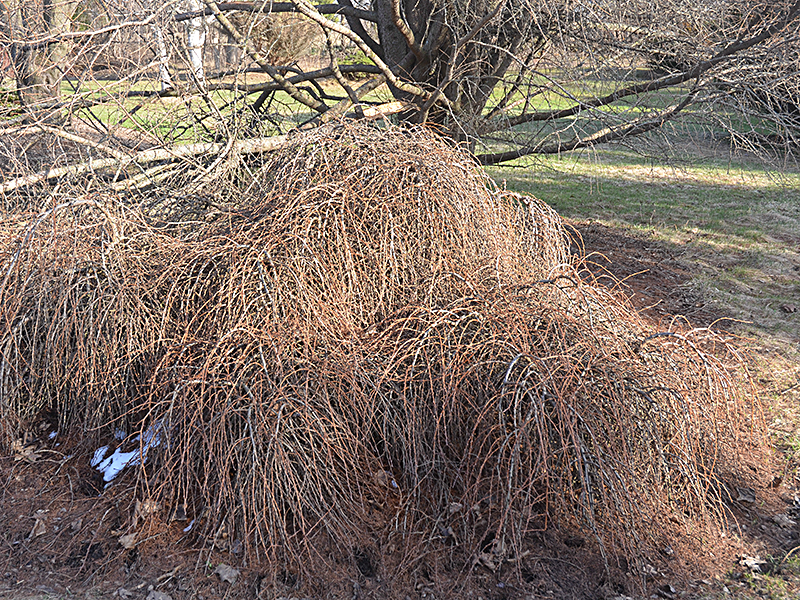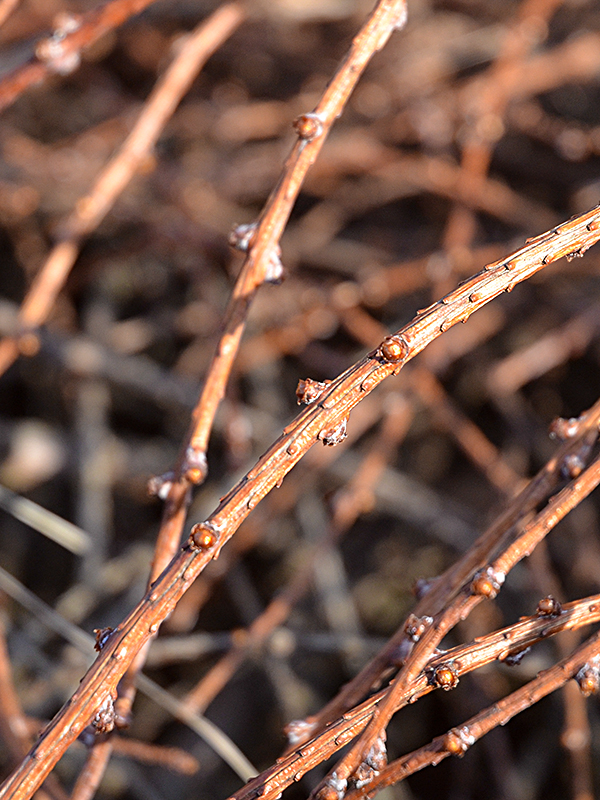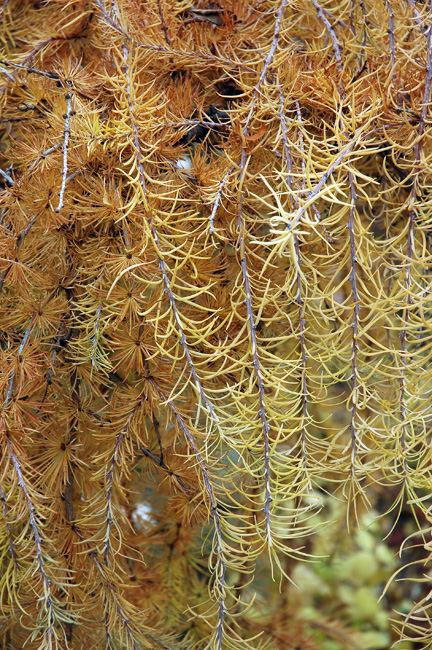| ID Characteristic | It has fine bright green foliage that is soft to the touch held on the pendulous branches in clusters. |
| Shape | Pendulous branches |
| Cultivation | The Weeping European Larch is best grown in moist, gravelly loam soils in full sun to light shade. It is intolerant of dry soils and urban pollution. |
| Pests | Potential pests include: larch case bearer, aphids, larch sawfly, tussock moth and Japanese beetles. Potential diseases include: needle cast, needle rust and canker. |
| Notable Specimens | The Arboretum, University of Guelph, Guelph, Ontario, Canada. |
| Habitat | Horticultural origin. |
| Bark/Stem Description | On young trees the bark is thin and scaly but on mature trees it is quite thick. At the base of the trunk a reddish brown inner bark may be exposed which contrasts with the greyish-brown of the outer bark. |
| Flower/Leaf Bud Description | Long terminal shoots are globose, short pointed, with many brown pointed scales while the lateral buds are shorter and blunter. |
| Leaf Description | The leaves are up to 2.5 cm long, narrow or blunt held on spurs in bunches of 30-40 needles. |
| Flower Description | L. decidua 'Pendula' is monecious, in the spring attractive red-pink, yellow or green, 1 cm long egg-shaped female strobili and smaller yellow male strobili cover the branches. |
| Fruit Description | Persistent cones with scales pubescent on the backside, not overlapping and not reflexed. The cone is egg shaped, 1 cm long, changing from red to yellow to brown at maturity: uncommon. |
| Colour Description | The Weeping European Larch has bright lime green foliage in the spring, soft slightly darker green foliage in the summer and a dull orange-yellow coloured needles in the autumn. |
| Texture Description | Medium fine in leaf; medium coarse in winter |



